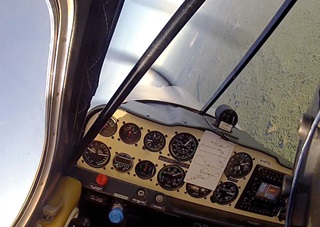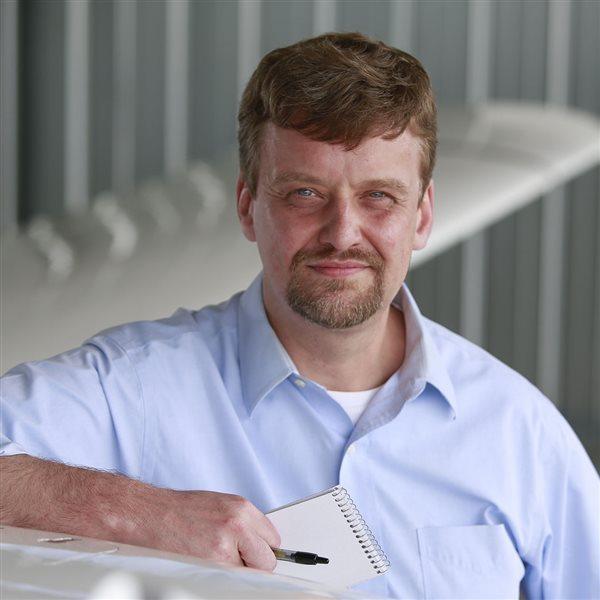
Time is running short, aerobatic airplanes are converging on Texas, some crossing the country to get there. Others of us will board a Boeing, rented mounts lined up and waiting for us locally.
This week offered one last chance to practice before heading south to the U.S. National Aerobatic Championships. Every practice flight and every regional contest flight this year has been flown with this contest in mind. Everything building to a crescendo, down to three flights that matter most.
I hoped to polish the IAC 2015 Sportsman Known sequence (which I will fly three times in Texas, though pilots in higher categories have Unknown and Free programs to cope with) into a shiny little gem, full of straight lines, round loops, one precise spin, one nifty little Hammerhead, and crisp rolls to make trees and clouds swap places with grace. My focus is on the trouble spots from the past flights captured by the video camera, footage that revealed a tendency to roll upright early from the inverted 45-degree downline. “Stop it (on the 45), hold it, hold it, roll it, hold it, hold it, pull” is the cadence I need to remember to articulate, because saying the words out loud helps the timing.
Before I even got there, there was an unpleasant surprise in figure three, the Immelmann, a half loop up and a half roll to upright at the top. Simple. A figure I had flown pretty consistently well in the last few weeks. This time the Super Decathlon got mushy and wallowed around the roll at the top, painfully slow, airspeed dropping to 60, then below.
Drat. I didn’t actually stall, but drat. I surely settled in the roll, enough to loose a point or two.
Practicing the sequence, at least for me (and, I presume, others at the lower end of the experience curve), is a bit like playing whack-a-mole. Fix one thing, and another mistake rears its ugly little head. This new mole is probably one we’ve seen before.
This was no time to pull the sequence apart, go back to working on elements as I have before. With the actual contest flights less than a week away, and this being one of my last chances to practice, I pressed on through the rest of the figures, mindful that much of the challenge is managing the flow of energy, gathering speed from one figure and expending it on the next, setting up the rest of the sequence in each moment. Climbing back to the starting altitude and kicking myself gently, I lined up to begin again from the Immelmann and fly the rest of the figures from there. There’s enough time in my aerobatic practice routine to fly the 10-figure sequence once and then do a few more figures, though flying two complete sequences might push things a bit. (Nearly every flight is 0.9 hours on the button, including transit to and from the practice area.) Cleaning up the Immelmann and flying the rest of the sequence from there seemed like the thing to do. Good to reinforce those two beats before the roll on the 45-degree downline of the half-Cuban, too.
What went wrong? This being a solo practice, I self-diagnosed the problem: too gentle on the pull, the half-loop grew too large leaving too little energy (airspeed) at the top to make a nice, clean, crisp roll to upright that judges favor. Time to whack the mole, I dove for speed, matching the entry speed I typically see at this point, about 150 mph, pulled to horizontal, noted the box positioning, waited a couple of beats to get into position, and pulled, a little harder this time. The result was closer to the Aresti ideal, but still not quite the thing. This mole was stubborn.
Seventy-seven powered pilots are probably doing much the same this week, many of them even more so. The online registrations completed in advance include 15 Sportsman pilots, and I imagine they may be working on some of the same issues. They may even be further along, focusing on consistent repetition and tiny bits of polish. The only thing really worth focusing on is one’s own routine, though I confess to developing a touch of envy as I touched base briefly with Bill Gordon, a veteran competitor (and U.S. Air Force veteran as well) and fellow International Aerobatic Club Chapter 35 member who was in Kansas working with a friend and fellow former fighter pilot. The wind was blowing 45 knots (at altitude) in their box over Kansas, Gordon reported cheerfully, and they were doing three flights a day. It immediately occurred to me that I’ve only managed six flights in the past month, and I expressed my trepidation that this would be woefully inadequate. Granted, Gordon is flying in the next category up, Intermediate, and that is a significant step up in difficulty, but still. Three a day? Yikes.
“Don’t get yourself all amped up,” Gordon said. “It’s just a big contest.”
In addition to the 77 powered aircraft pilots, another 17 have registered in advance for the glider competition. Those ranks may increase with last-minute entries, but there’s only one competitor to concern myself with: me.
I’ve had it in mind for a while to tell you more about Gordon, who has flown a huge number of contests, possibly as many or more than anyone. But rather than pester him on the phone as he was clearly itching to get back in the air, I left him to his practice, and will catch up next week and fill you in. The veteran competitor had one other useful tip in parting: Remember to have fun. Win or lose, wherever I stack up in the Sportsman standings, “You’ll still have fun competing with some of the best pilots around.”



